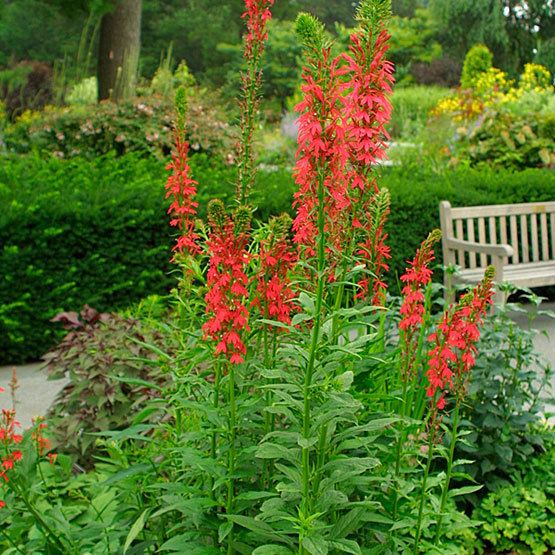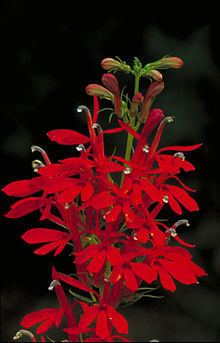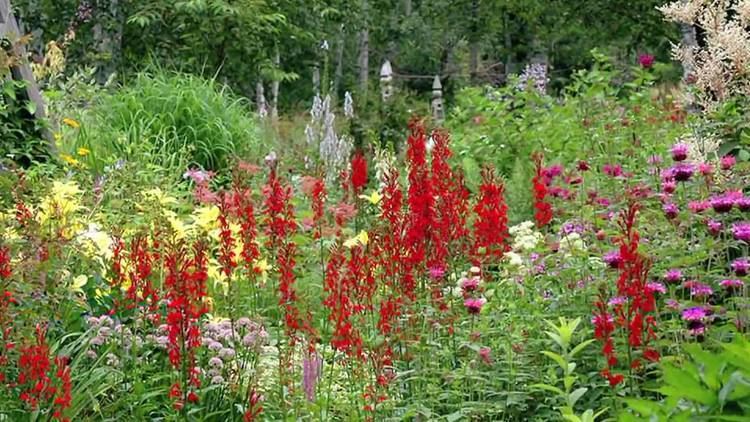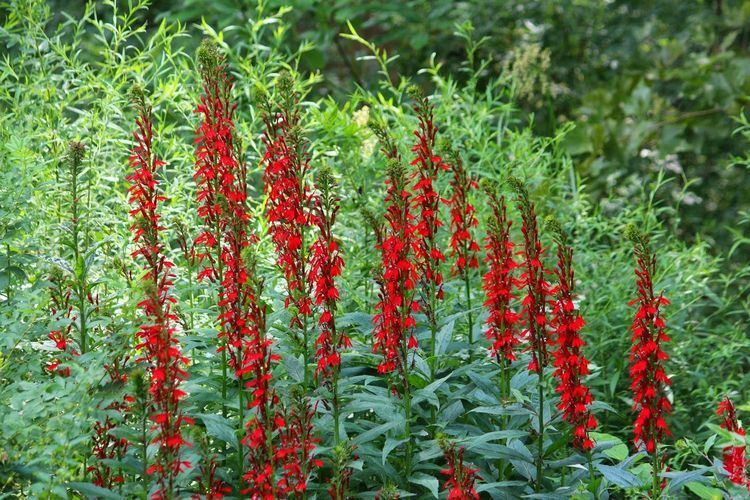Higher classification Lobelias | Subfamily Lobelioideae Scientific name Lobelia cardinalis Rank Species | |
 | ||
Similar Lobelias, Lobelia siphilitica, Bee balm, Butterfly weed, Eutrochium purpureum | ||
Lobelia cardinalis planting emersed aquarium plant
Lobelia cardinalis (syn. L. fulgens, cardinal flower) is a species of Lobelia native to the Americas, from southeastern Canada south through the eastern and southwestern United States, Mexico and Central America to northern Colombia.
Contents
- Lobelia cardinalis planting emersed aquarium plant
- Lobelia cardinalis hygrophila angustifolia ludwigia repens
- Description
- Etymology
- Cultivation
- Medicinal and other uses
- References

Lobelia cardinalis hygrophila angustifolia ludwigia repens
Description

It is a perennial herbaceous plant that grows up to 1.2 m (4 ft) tall and is found in wet places, streambanks, and swamps. The leaves are up to 20 cm (8 in) long and 5 cm (2 in) broad, lanceolate to oval, with a toothed margin. The flowers are usually vibrant red, deeply five-lobed, up to 4 cm across; they are produced in an erect raceme up to 70 cm (28 in) tall during the summer to fall. Forms with white (f. alba) and pink (f. rosea) flowers are also known.

Lobelia cardinalis is related to two other Lobelia species in to the Eastern United States, Lobelia inflata (Indian tobacco) and Lobelia siphilitica (great lobelia); all display the characteristic "lip" petal near the opening of the flower and the "milky" liquid the plant excretes. L. siphilitica has blue flowers and is primarily pollinated by bees, whereas L. cardinalis is red and is primarily pollinated by the ruby-throated hummingbird (Archilochus colubris).
Etymology
It was introduced to Europe in the mid-1620s, where the name cardinal flower was in use by 1629, likely due to the similarity of the flower's color to the vesture of Roman Catholic Cardinals.
Cultivation

In cultivation L. cardinalis requires rich, deep soil which remains reliably moist year-round. It has gained the Royal Horticultural Society's Award of Garden Merit.
This plant is easily propagated by seed and dividing out the young plants which form around the older mature plants each year. Although the plant is generally considered a perennial, they may be short lived. They prefer moist soils in part shade.
Medicinal and other uses
North American indigenous peoples used root tea for a number of intestinal ailments and syphilis. Leaf teas were used by them for bronchial problems and colds, inter alia. The Meskwaki people used it as part of an inhalant against catarrh. The Penobscot people smoked the dried leaves as a substitute for tobacco. It may also have been chewed. The plant contains a number of alkaloids. As a member of the genus Lobelia, it is considered to be potentially toxic. Lobelia may have potential as a drug for, or in study of, neurological disorders. The Zuni people use this plant as an ingredient of "schumaakwe cakes" and used it externally for rheumatism and swelling.
